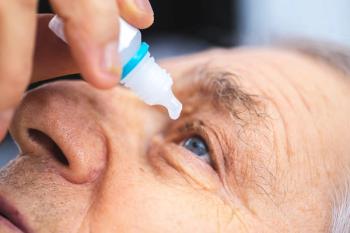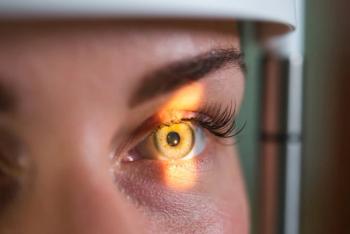
What you don't know about choroidal melanoma
Carol Shields, MD, and Jerry Shields, MD, of Wills Eye Hospital ocular oncology service shared their advice for what to look out for when it comes to choridal melanoma during a session at the American Academy of Optometry 2015 meeting in New Orleans.
New Orleans-Carol Shields, MD, of Wills Eye Hospital ocular oncology service, shared her advice for what to look out for when it comes to choridal melanoma during the Plenary Session at the American Academy of Optometry meeting in New Orleans.
More from AAO:
Choroidal nevus and melanoma
Dr. Shields describes the relationship between choroidal nevus and melanoma as finding a rotten apple.
“You go apple picking and among that group of fruit, there’s going to be one that goes bad. And you as eyecare specialists need to know which nevus is going to turn into melanoma,” she says. “Sometimes it’s simple; sometimes it’s very challenging.”
A recent study found that choroidal nevus occurs in approximately five percent of Caucasians and shows increasingly prevalence with age, says Dr. Shields. She estimates that most eyecare practitioners are seeing at least one patient per day with a choroidal nevus.
But that study used a database that looked only at the posterior segment of the eye-only within 45 degrees of the macula and the disc. She says that in actuality, up to 20 percent of Caucasians could have a choroidal nevus that you will have to determine whether it could be melanoma.
Dr. Shields identified a number of features that occur with choroidal nevus. These features can predict growth from nevus into melanoma:
• Nine percent have a little bit of subretinal fluid
• Six percent have overlying orange pigment
• Drusen is present in 60 percent
• Neovascularization of the choroid rarely occurs
How to spot the one that will turn into melanoma
Dr. Shields highlights some things to keep in mind:
• A choroidal nevus can change and grow over time and still remain a nevus.
• A nevus can affect vision.
• The risk of transformation into melanoma is one in 8,845.
“So, you can reassure your patients that less than one percent turn into melanoma,” she says.
But the risk does increase with age. While patients between ages 15-19 with a nevus have a risk of one in 269,000 of transformation into melanoma, patients ages 70-74 face a risk of one in 3,000.
“You’ve got to watch those patients-I would say between ages 50 and 80, they’re at a pretty high risk for transformation,” says Dr. Shields.
When looking for important risk factors, keep in mind, “To Find Small Ocular Melanoma Using Helpful Hints Daily,” which stands for:
• Thickness greater than 2 mm
• Subretinal fluid
• Symptoms
• Orange pigment present
• Margin within 3 mm of the optic disc
• Ultrasonographic hollowness (vs. solid/flat)
• Halo absent
• Drusen absent
When it comes to imaging, Dr. Shields says she uses fundus photography, ultrasonography, optical coherence tomography (OCT), and autofluourescence on every patient with a choroidal nevus.
Size is one of the best indicators for the outcome. Every millimeter thicker that a melanoma grows produces a five percent increase for metastasis, says Dr. Shields, so early detection is vitally important.
“What do I see for the future? I see earlier detection using your imaging techniques, genetic testing on all patients, and better systemic therapies,” she says.
Newsletter
Want more insights like this? Subscribe to Optometry Times and get clinical pearls and practice tips delivered straight to your inbox.









































